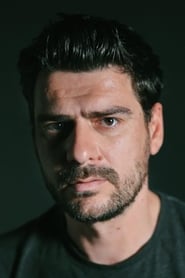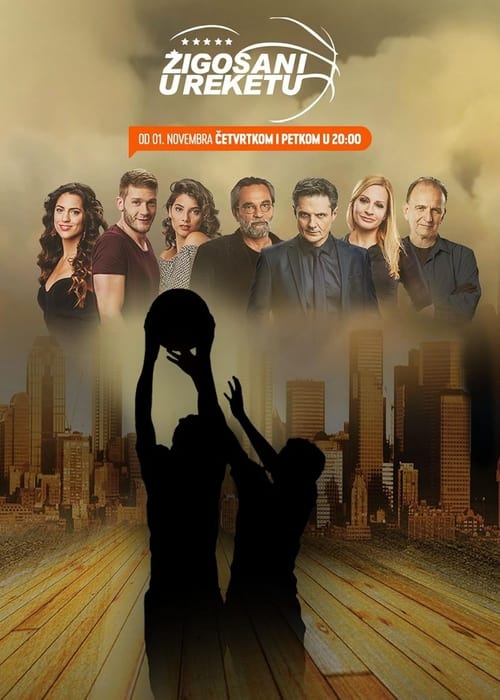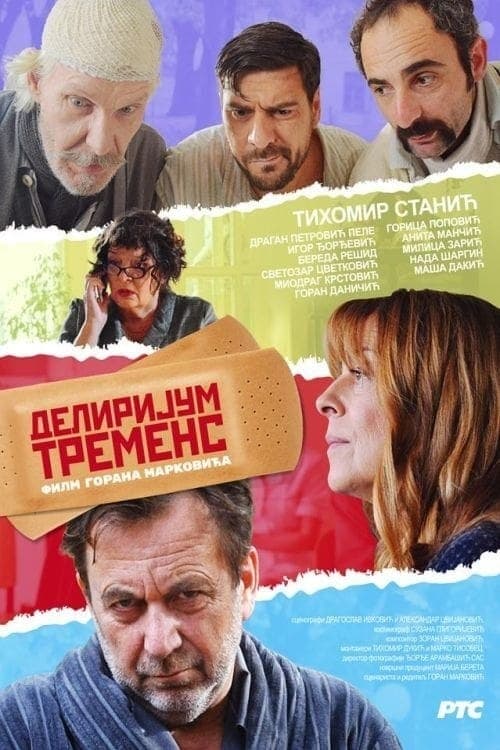
Ask Your Own Question
What is the plot?
In Episode 33 of "Surviving Belgrade," the episode opens with a tense atmosphere as the main characters gather in a dimly lit room, discussing their next move after the recent betrayal within their group. The camera pans across their anxious faces, highlighting the weight of their decisions. Marko, feeling the pressure of leadership, suggests they need to confront the traitor directly to regain control and trust among the group.
The scene shifts to the streets of Belgrade, where the group splits into two factions. One faction, led by Marko, decides to track down the traitor, while the other, led by Ana, believes they should focus on fortifying their current hideout. The tension between Marko and Ana is palpable, as they argue over the best course of action. Marko's determination to confront the traitor stems from his desire to protect the group, while Ana's cautious approach reflects her fear of further conflict.
As night falls, Marko and his faction stealthily navigate the dark alleys of the city, their breaths visible in the cold air. They arrive at an abandoned warehouse, rumored to be the traitor's hideout. The atmosphere is thick with suspense as they approach the entrance, weapons drawn. Marko's heart races, driven by a mix of anger and fear for his friends. They quietly enter the warehouse, the sound of their footsteps echoing in the empty space.
Inside, they find the traitor, Luka, surrounded by a group of hostile individuals. A confrontation ensues, with Marko demanding answers. Luka, cornered, tries to defend his actions, claiming he was forced into betrayal for his family's safety. The emotional weight of his words hangs in the air, creating a moment of hesitation among Marko's group. However, the tension escalates when one of Luka's allies lunges at Marko, leading to a chaotic fight.
The fight is intense and chaotic, with punches thrown and bodies colliding. Marko, fueled by adrenaline, manages to subdue Luka's ally, but not without sustaining a cut on his arm. The camera captures the raw emotion on Marko's face as he grapples with the reality of violence. In the midst of the chaos, Ana and her faction arrive, having followed Marko's trail. They quickly join the fray, turning the tide of the battle.
As the dust settles, Marko confronts Luka once more, demanding to know why he betrayed them. Luka, now visibly shaken, reveals that he was coerced by a powerful gang threatening his family. This revelation creates a moment of internal conflict for Marko, who must decide whether to show mercy or seek revenge. The group watches in silence, each member grappling with their own feelings about loyalty and betrayal.
In a surprising turn, Marko chooses to let Luka go, believing that the threat to his family is more significant than their personal grievances. This decision shocks both his faction and Ana's group, leading to a heated debate about the morality of his choice. Marko's internal struggle is evident as he wrestles with the implications of his mercy, while Ana expresses her disapproval, fearing it could endanger them all.
The episode concludes with the group returning to their hideout, the atmosphere heavy with unresolved tension. Marko reflects on his decision, feeling the weight of leadership and the burden of protecting his friends. The camera lingers on his face, capturing the mix of determination and doubt as they prepare for the challenges that lie ahead. The final shot fades to black, leaving viewers on edge about the future of the group and the consequences of their choices.
What is the ending?
In the ending of "Surviving Belgrade," Season 1, Episode 33, the main characters face the culmination of their struggles. Tensions reach a peak as alliances shift and personal sacrifices are made. The episode concludes with a dramatic confrontation that leads to a bittersweet resolution for the characters, leaving them to reflect on their choices and the future ahead.
As the episode opens, the sun sets over Belgrade, casting a warm glow on the city. The atmosphere is thick with anticipation as the characters gather in a dimly lit warehouse, a location that has become a symbol of their trials. The air is heavy with unspoken words and unresolved conflicts.
Milan, feeling the weight of his decisions, stands at the center, his brow furrowed with worry. He knows that the choices he makes tonight will affect not only his fate but also that of his friends. His internal struggle is palpable; he wants to protect those he cares about but is aware that his actions may lead to further chaos.
As the group discusses their next steps, tensions flare between Ana and Luka. Ana, driven by a fierce determination to reclaim her life, confronts Luka about his past betrayals. The emotional stakes are high, and the room crackles with the intensity of their confrontation. Luka, defensive yet remorseful, tries to explain his actions, but Ana's hurt runs deep. The audience can feel the weight of their shared history, the love and pain intertwined.
Suddenly, a loud crash interrupts their heated exchange. A rival group, seeking to take advantage of the discord, bursts into the warehouse. The characters quickly shift from confrontation to survival mode. Milan takes charge, rallying his friends to defend themselves. The chaos that ensues is frenetic; the camera captures the frantic movements, the shouts, and the sounds of struggle.
In the midst of the chaos, we see Marko, who has been a quiet observer throughout the episode, step forward. He makes a selfless decision to protect Ana, pushing her out of harm's way but getting injured in the process. His sacrifice is a poignant moment, showcasing his growth from a passive character to one willing to fight for those he loves.
As the fight rages on, the characters are forced to confront their fears and insecurities. Each one faces a moment of reckoning, revealing their true selves. The emotional turmoil is evident on their faces, and the stakes have never been higher.
Eventually, the rival group is driven off, but not without consequences. The warehouse, once a place of refuge, is now a scene of devastation. The characters, bruised and battered, gather to assess the damage. Milan, looking around at his friends, realizes that they have all changed. The bonds they forged through adversity have strengthened, but the scars of their experiences remain.
In the final moments of the episode, the group stands together, united yet aware of the challenges that lie ahead. They share a moment of silence, reflecting on their journey and the sacrifices made. Milan, with a newfound resolve, speaks about the importance of sticking together, emphasizing that their survival depends on their unity.
As the camera pulls back, the group is framed against the backdrop of Belgrade, a city that has witnessed their struggles. The episode ends on a note of uncertainty, leaving the audience to ponder the future of these characters. Each one has been irrevocably changed by their experiences, and while they have survived this battle, the war for their lives and identities continues.
In summary, Milan, Ana, Luka, and Marko emerge from the episode with a deeper understanding of themselves and each other, but the path forward remains fraught with challenges. Their fates are intertwined, and the bonds they have formed will be tested in the episodes to come.
Is there a post-credit scene?
In "Episode 33" of "Surviving Belgrade," there is indeed a post-credit scene that adds an intriguing layer to the episode's narrative.
As the credits roll, the screen fades back in to a dimly lit alleyway in Belgrade. The camera pans slowly, revealing a figure cloaked in shadows, leaning against a graffiti-covered wall. The atmosphere is tense, with the distant sounds of the city echoing in the background.
The figure steps into the light, revealing it to be one of the secondary characters, Marko, who has been a source of conflict throughout the season. His expression is a mix of determination and anxiety. He pulls out a small, crumpled piece of paper from his pocket, glancing around nervously as if he is being watched.
As he unfolds the paper, the camera zooms in on the contents, revealing a list of names, some crossed out, others highlighted. It becomes clear that Marko is involved in a deeper plot that has been brewing beneath the surface of the main storyline. His internal struggle is palpable; he seems torn between loyalty to his friends and the dangerous path he is considering.
The scene ends with Marko looking up, a steely resolve forming in his eyes as he mutters to himself, "It's time to choose a side." The screen fades to black, leaving viewers with a sense of foreboding and anticipation for the conflicts that will arise in future episodes. This post-credit moment effectively sets the stage for escalating tensions and character developments, hinting at the complexities of survival in Belgrade.
What significant event occurs during the community meeting in this episode?
During the community meeting in Episode 33, tensions rise as residents voice their concerns about the gang's activities. Marko takes a stand, advocating for unity among the community members. This moment is crucial as it highlights his leadership potential and the growing unrest among the citizens, setting the stage for future confrontations.
How does the relationship between Marko and Ana evolve in this episode?
In this episode, the relationship between Marko and Ana deepens as they confront the realities of their situation. Ana expresses her fears about the gang's influence, leading to a heartfelt conversation where Marko reassures her of his commitment. Their bond is tested when Marko makes a risky decision to protect her, showcasing both vulnerability and strength.
What challenges does the main character face in Episode 33?
In Episode 33, the main character, Marko, faces significant challenges as he navigates the treacherous political landscape of Belgrade. He is torn between his loyalty to his friends and the pressure from a powerful local gang that threatens his family's safety. Marko's internal conflict intensifies as he grapples with the moral implications of his choices.
How does the episode explore themes of loyalty and betrayal through character interactions?
In Episode 33, themes of loyalty and betrayal are explored through the interactions between Marko, his friends, and the gang members. A pivotal scene occurs when one of Marko's closest friends is coerced into betraying him, leading to a dramatic confrontation. This betrayal forces Marko to reevaluate his trust in those around him, deepening the emotional stakes of the narrative.
What role does the gang play in the events of Episode 33?
The gang plays a pivotal role in Episode 33, acting as both an antagonist and a catalyst for character development. Their intimidation tactics escalate, forcing Marko to make difficult choices that impact his relationships. The gang's presence looms over the community, creating a tense atmosphere that drives the plot forward.
Is this family friendly?
"Surviving Belgrade," season 1, episode 33, titled "Episode 33," contains several elements that may be considered objectionable or upsetting for children or sensitive viewers.
-
Intense Emotional Conflicts: The episode features scenes of heightened emotional tension between characters, which may be distressing for younger viewers. The portrayal of arguments and misunderstandings can evoke feelings of anxiety.
-
Themes of Survival and Struggle: The overarching theme of survival in a challenging environment may include depictions of hardship, which could be unsettling for some viewers, particularly children who may not fully grasp the context.
-
Mature Discussions: There are moments where characters engage in discussions about loss, betrayal, and trust, which may be too complex or heavy for younger audiences to process.
-
Visuals of Conflict: While not overly graphic, there may be scenes that depict conflict or confrontation that could be alarming to sensitive viewers.
-
Emotional Vulnerability: Characters display vulnerability and moments of despair, which could resonate deeply and potentially upset viewers who are sensitive to emotional distress.
These elements contribute to a narrative that, while rich in character development and storytelling, may not be suitable for all audiences, particularly younger children or those who are sensitive to emotional or intense themes.

















